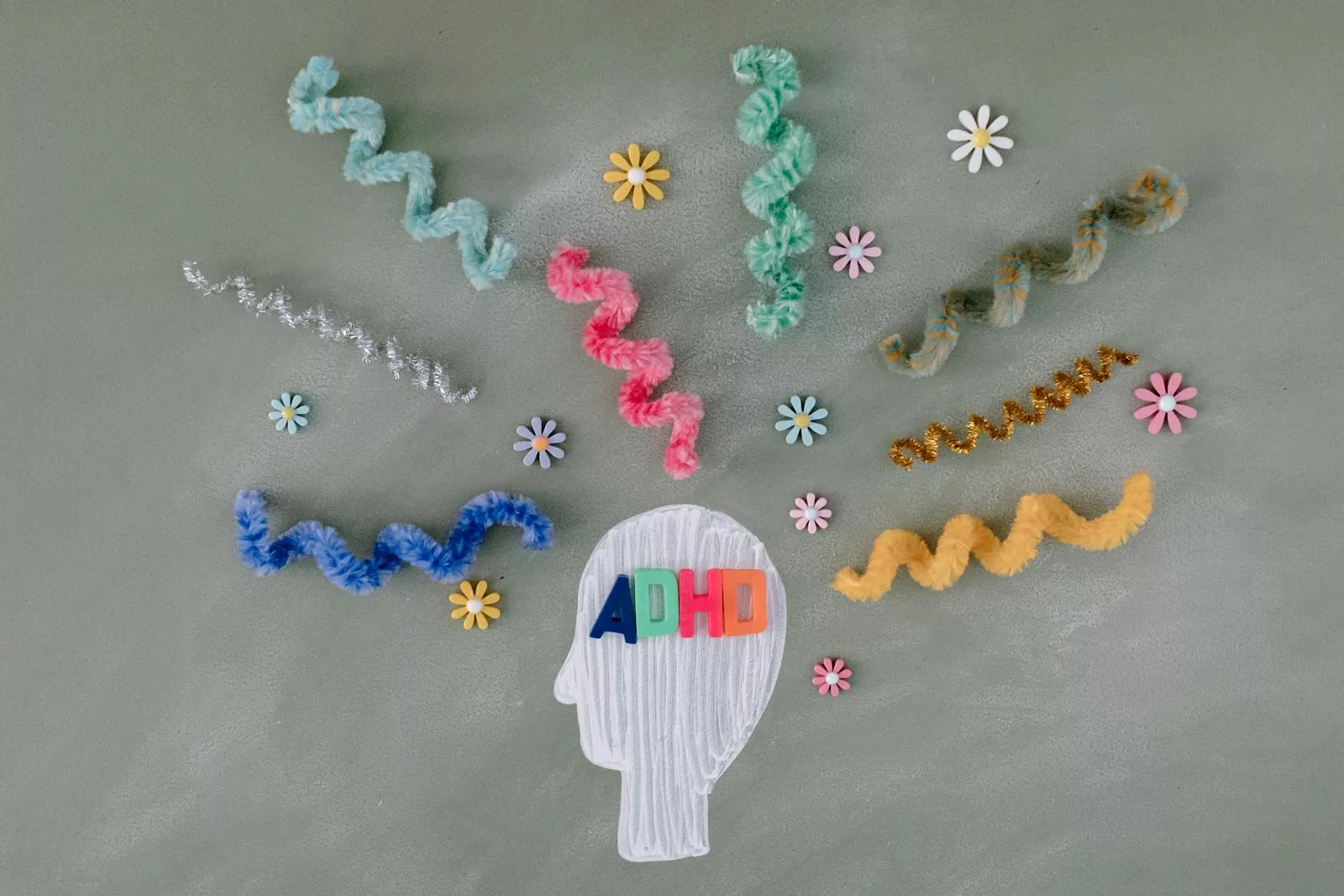Children with ADHD (Attention-Deficit/Hyperactivity Disorder) often face challenges with focus, impulse control, and following through with tasks. These difficulties can lead to frustration for both the child and their caregivers, creating an environment where everyday routines and interactions can become stressful. Finding effective strategies to manage these behaviors is essential for fostering a more harmonious and supportive home.
Reward systems are an evidence-based strategy that can encourage positive behavior, build self-esteem, and strengthen relationships. By focusing on motivation and positive reinforcement, these systems provide children with ADHD a structured framework to succeed. Not only do they help children thrive by acknowledging their efforts and achievements, but they also nurture development and reinforce the bond between parent and child, creating a foundation for long-term success and trust.
Benefits of a Reward System for Children with ADHD
Reward systems, when implemented effectively, provide a structured and positive approach to addressing behavioral challenges. Unlike punitive measures, which focus on discouraging undesirable behaviors, reward systems emphasize reinforcing positive actions. This shift in focus helps children with ADHD experience success and motivation in areas where they might otherwise struggle. By associating specific behaviors with rewards, children are more likely to repeat those behaviors, fostering a sense of accomplishment and paving the way for long-term improvements.
1. Encouraging Positive Behaviors
Children with ADHD often struggle to connect their actions to consequences, which can make traditional disciplinary approaches less effective. A reward system offers a clear and tangible way for children to understand the relationship between their behavior and its outcomes. For instance, earning a sticker for completing a task or receiving extra screen time for good behavior creates a direct association between effort and reward. This method encourages children to actively engage in positive behaviors, as they can see the benefits of their actions in real-time. Over time, these rewards can help establish habits that require less external reinforcement, enabling children to internalize these behaviors.
The process of encouraging positive behaviors also extends to improving relationships within the family or classroom. When adults focus on celebrating a child’s achievements instead of addressing shortcomings, the atmosphere becomes more supportive and collaborative. For example, acknowledging when a child shares toys with siblings or completes homework without reminders reinforces the idea that their efforts are valued and noticed. This positive reinforcement not only motivates the child but also helps reduce tension and frustration that might arise from frequent behavioral challenges.
2. Improving Focus and Task Completion
One of the most common struggles for children with ADHD is difficulty maintaining focus, particularly on tasks that require sustained attention. A reward system can help address this issue by breaking tasks into smaller, more manageable steps, each linked to a specific reward. For instance, instead of expecting a child to clean their entire room in one go, parents can assign smaller tasks, such as picking up toys or putting clothes away, and reward each completed step. This approach makes the overall task less overwhelming and provides a sense of achievement at each stage, keeping the child motivated to continue.
By providing immediate and consistent rewards, a reward system helps children stay engaged and focused on their tasks. Children with ADHD often struggle with delayed gratification, so offering smaller, immediate rewards can be particularly effective. For example, a child who earns a star for each completed homework assignment can work toward a larger weekly reward, such as choosing a family activity. This not only helps the child stay on track but also teaches important skills like goal-setting and perseverance, which are critical for success in school and beyond.
3. Building Self-Esteem and Confidence
Children with ADHD frequently face criticism for their impulsive or inattentive behaviors, which can negatively impact their self-esteem. Over time, repeated negative feedback may lead them to believe that they are incapable of meeting expectations, further discouraging effort and engagement. A reward system offers an opportunity to reverse this narrative by focusing on the child’s strengths and achievements. For example, acknowledging and rewarding a child for sitting through a family meal or successfully completing a project can boost their confidence and help them recognize their potential for success.
As children begin to see the positive outcomes of their efforts, they become more willing to take on challenges and strive for improvement. This growing confidence can extend to other areas of their lives, such as social interactions or extracurricular activities. Additionally, the act of earning rewards and receiving praise helps children feel valued and supported, reinforcing the idea that they are capable of achieving their goals. Over time, these experiences contribute to a stronger sense of self-worth and resilience, empowering children to tackle new challenges with optimism and determination.
4. Strengthening Parent-Child Relationships
The implementation of a reward system fosters a collaborative and positive dynamic between parents and children. Rather than focusing solely on correcting undesirable behaviors, parents can shift their attention to recognizing and celebrating their child’s successes. This approach not only reduces conflict but also creates opportunities for meaningful bonding. For instance, working together to set goals and decide on rewards allows parents and children to develop a shared understanding of expectations and achievements, strengthening their relationship in the process.
Moreover, reward systems encourage open communication and mutual respect. When parents involve their child in designing the system—such as choosing rewards or tracking progress—it empowers the child to take ownership of their behavior. This sense of involvement helps build trust and cooperation, as the child feels that their efforts and opinions are valued. Over time, this collaborative approach can lead to a more harmonious household environment, where positive interactions outweigh conflicts and miscommunications.
5. Teaching Life Skills
Reward systems offer more than just immediate behavioral improvements; they also help children with ADHD develop essential life skills. For example, earning rewards for completing chores or managing time effectively teaches responsibility and organizational skills. Similarly, working toward larger rewards by saving points or tokens helps children learn about delayed gratification and goal-setting. These skills are not only crucial for managing ADHD-related challenges but also lay the foundation for success in school, work, and personal relationships.
Additionally, reward systems help children practice self-regulation and problem-solving. By breaking tasks into smaller steps and linking them to rewards, children learn how to approach challenges systematically. For instance, a child who struggles with completing a school project might use a reward system to tackle each phase—research, drafting, and finalizing—individually. This step-by-step approach not only makes tasks more manageable but also equips children with strategies for overcoming obstacles independently. Over time, these skills become ingrained, helping children navigate their academic and personal lives with greater confidence and competence.
Steps to Create an Effective Reward System
1. Identify Target Behaviors
Start by selecting specific behaviors you want to encourage. These should be clear, measurable, and achievable. For example, instead of “behave better,” choose “complete homework without reminders” or “use kind words when speaking to siblings.” Focus on one or two behaviors at a time to avoid overwhelming your child. Once they master these behaviors, you can gradually introduce new goals.
To ensure success, involve your child in identifying these target behaviors. Ask them what they think they can work on and explain how improving these behaviors will help them. This collaboration increases their sense of ownership and motivation to succeed. For younger children, using visual aids like pictures or icons can make the process more engaging and easier to understand.
2. Set Clear Goals and Expectations
Explain the reward system to your child in simple terms. Let them know what behavior is expected and what they will earn for meeting those expectations. Use visual aids, such as charts or checklists, to make the goals tangible and easier to track. For example, a star chart can track completed tasks, with a certain number of stars leading to a reward. Break larger tasks into smaller steps if necessary, such as “finish math homework” becoming “complete five problems.”
Revisit these goals regularly to ensure they remain relevant and manageable. As your child improves, you may adjust the goals to include more complex behaviors or refine existing expectations to build on their progress. Regular check-ins can also provide an opportunity to celebrate achievements and reinforce their commitment to the system.
3. Choose Meaningful Rewards
Select rewards that genuinely motivate your child. These can range from small, immediate incentives (like stickers or extra screen time) to larger rewards (like a trip to the park, a new toy, or a family outing) for consistent positive behavior over time. Involve your child in choosing rewards to ensure they feel invested in the system. For example, you could create a “reward menu” where they can pick from a list of options they value most.
Consider using a mix of short-term and long-term rewards to keep your child engaged. For instance, earning small rewards throughout the week can culminate in a larger weekend reward. This layered approach reinforces sustained effort while providing regular encouragement. Additionally, non-material rewards, such as extra bedtime stories or one-on-one time with a parent, can be equally meaningful and foster deeper connections.
4. Provide Immediate Feedback
For children with ADHD, immediate feedback is crucial. Praise and reward them as soon as they demonstrate the desired behavior. This helps reinforce the connection between their actions and the positive outcome, making them more likely to repeat the behavior in the future. For example, saying, “You did a great job putting your toys away right after playtime! Here’s your sticker,” reinforces the behavior effectively.
When providing feedback, be specific about what they did well. Instead of generic praise, use detailed language like, “I’m so proud of how you listened to directions the first time.” This specificity helps your child understand exactly what behaviors to repeat. Positive feedback should be enthusiastic but genuine, ensuring it resonates with your child.
5. Be Consistent
Consistency is key to the success of a reward system. Ensure that rewards are given only when the target behavior is achieved. Avoid giving rewards for partial compliance or unrelated behaviors, as this can confuse your child and undermine the system’s effectiveness. Clearly communicate when rewards are earned and why, so your child understands the relationship between their efforts and the outcomes.
Consistency also applies to the timing of rewards. For example, if you promise a reward after school for completing homework, ensure it’s delivered promptly. This predictability builds trust and reinforces the system’s reliability. Inconsistencies can lead to frustration or reduced motivation, so strive to maintain fairness and clarity.
6. Adjust as Needed
As your child makes progress, adapt the reward system to keep it challenging and engaging. Gradually increase the expectations or switch to different behaviors as they master the initial goals. Be flexible and open to changing rewards if they lose their motivational value. For instance, if stickers lose their appeal, you might switch to tokens that can be exchanged for a favorite activity.
Involve your child in these adjustments to keep them engaged. Ask for their input on new goals or reward ideas, ensuring the system remains collaborative and relevant to their interests. Regularly updating the system prevents stagnation and keeps it aligned with your child’s evolving needs and preferences.
Tips for Success
Use Positive Reinforcement Alongside Rewards
Praise your child frequently for their efforts, not just their achievements. For example, if they attempt to clean their room but don’t finish, acknowledge their effort: “I love how you started organizing your toys. Great job!” Regular encouragement fosters a growth mindset and helps your child feel valued regardless of the outcome. Reinforcing effort builds resilience and encourages persistence even when tasks feel challenging.
Keep It Fun
Make the reward system enjoyable and engaging. Use colorful charts, exciting reward jars, or playful themes to keep your child interested. Turn the process into a game to maintain their enthusiasm. For example, you could create a treasure map where each successful behavior adds a step toward finding the “treasure.”
Incorporate variety into the system to prevent boredom. Rotating themes or introducing seasonal rewards can keep your child excited and motivated. Gamifying the process makes it less about discipline and more about shared enjoyment and achievement.
Stay Patient and Encouraging
It’s normal for children with ADHD to have setbacks. Focus on their progress rather than perfection, and remind them that learning new habits takes time. Celebrate small victories to keep them motivated. Acknowledge their challenges while highlighting their efforts, saying things like, “I know staying focused on homework is hard, but you did a fantastic job trying today.”
Patience is particularly important when introducing new behaviors. Children with ADHD may take longer to internalize expectations, so remain supportive and consistent in your approach. Providing a safe space for mistakes reinforces the idea that effort and improvement matter most.
Collaborate with Teachers and Caregivers
If your child spends time in school or with other caregivers, coordinate the reward system across settings. Consistency in expectations and reinforcement will help your child generalize positive behaviors. Share specific goals and strategies with teachers to ensure a unified approach. Collaboration fosters a sense of teamwork and helps your child feel supported in all areas of their life.
Common Mistakes to Avoid
- Overloading the System: Avoid setting too many goals at once, as this can overwhelm your child and dilute the system’s effectiveness. Focus on a few key behaviors to ensure success.
- Using Punishment Instead of Rewards: Focus on reinforcing good behavior rather than punishing bad behavior. Positive reinforcement is more effective and encourages a healthier dynamic.
- Inconsistent Application: Ensure that rewards and praise are given consistently to maintain trust and motivation. A predictable system fosters reliability and engagement.
Conclusion
Reward systems are a powerful tool for promoting positive behavior in children with ADHD. By focusing on specific goals, providing immediate and meaningful rewards, and maintaining consistency, you can help your child build confidence and develop important life skills. Remember, patience and positivity are key to fostering long-term success. With a well-designed reward system, you can create a supportive environment that helps your child thrive both at home and beyond. By celebrating progress and reinforcing effort, you lay the foundation for lifelong skills that empower your child to succeed while nurturing a positive and trusting relationship.




